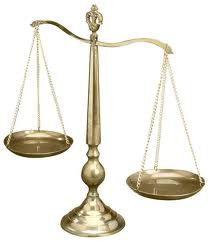Introduction
Establishment of Family Courts was on the one hand an expression of our sophisticated legal thought, on the other hand, an acknowledgement that our traditional civil courts had failed to successfully deal with the suits relating to family affairs. Family Courts were established by the Family Courts Ordinance 1985. 1, to serve the purpose of quick, effective and amicable disposal of some of the family matters. This purpose, though not perceptible from the preamble of the Ordinance, is evident in different places of the body of the Ordinance. The anxiety of the framers of the Ordinance for the said speedy disposal of the family cases is palpable in fixing only thirty days for the appearance of the defendant.2, in providing that if, after service of summons, neither party appears when the suit is called on for hearing the court may dismiss the suit.3, The purpose is again manifest in providing a procedure for trial of cases in camera if required for maintaining secrecy, confidentiality and for effective disposal of some complicated and sophisticated matters which may not be possible under normal law of the land. Once more, the Code of Civil Procedure 1908 except sections 10 and 11 and the Evidence Act 1872 have not been made applicable in the proceedings under the Family Courts4 which is another sign that indicates the concern of the lawmakers to dispose of the family matters in congenial atmosphere of the Family Court, which was proven to be absent in the lengthy procedure of civil courts. Unfortunately, the noble aim of introducing Family Courts has not been expectantly achieved though already more than two decades have passed after the courts’ coming into operation. There are many and diverse type of reasons behind such let down.
Various problems in Family Courts
Various problems in Family Courts are given as follows:-
The Unacknowledged Problem
There are many problems with therapeutic jurisprudence in the family courts, which now runs the gamet from all manner of alternate dispute resolution procedures, to excessive guardian ad item practices, to various court-ordered therapies, to extensive psychological opining and forensic evaluation in court cases. One of the problems with the rise of therapeutic jurisprudence and the placement of non-legal systems and non-legal professionals into the courts has been the subtle denigration of long-established precepts of lawyer independence and due process. One of the many ways this happens in the family courts has been, ironically, through the introduction of subtle and often unrecognized conflicts of interest afflicting lawyers’ representations of their clients, created through the common development of multidisciplinary collegial relationships and business referrals, both informally and through the very multidisciplinary organizations which are promoting therapeutic jurisprudence ideas. The conflicts of interest arise because most lawyers represent different kinds of clients on ideologically oppositional sides in different cases. The typical family lawyer sometimes represents the wife, sometimes the husband, sometimes the “good guy”, and sometimes the “bad guy”. If a lawyer coming into a case runs up against an expert with whom he has a referral or employment relationship in other cases and that expert takes a position adverse to the lawyer’s client in the new case, the lawyer will have a very difficult time adequately representing his client. Appropriate representation may require the lawyer to strenuously object to the expert’s testimony or even the expert himself. But if the lawyer needs the good will and cooperation of that same expert in connection with the lawyer’s other clients’ pending cases, he cannot do that because he may put those other cases at risk. The legal community, even in urban areas, is limited and often close-knit. Lawyers in the same area of practice regularly encounter each other in different cases. The pool of forensic experts and guardians ad litem (GALs) tends to be even smaller. The repeated association time and again of these specialists in cases means that at any time and from time-to-time any given one of them may show up on the “wrong side” of a lawyer’s case — and simultaneously also be on the “right side” of other of the lawyer’s cases, whether as a hired expert or a court-appointed expert. This creates many of the same dilemmas that ordinary client conflict-of-interest issues do.[1]
How the Conflicts of Interest Affect the Lawyers and Their Clients’ Cases
Lawyers in these positions will be tempted to rationalize to themselves, as well as maintain the posture in the community at large, that the expert’s opinions, even when they are adverse to his client, are scientifically valid even when they may not be, even if they are deeply flawed or completely specious. These lawyers may rationalize to themselves that the validity of the science itself is not their responsibility because, after all, lawyers are not “scientists”. The lawyer who naively or purposefully steps down the path of multidisciplinary practice, regularly exchanging referrals and engaging in other close associations with nonpayer case participants simply cannot avoid encountering this problem. Lawyers and these other participants in the system have very different roles. When lawyers directly hire paralegals, experts, and others to assist them, there is not as much of a potential conflicts problem, even when these individuals are independent contractors. First, their work is covered by attorney work product unless and until they testify. Second, because they were hired by the lawyer, they are subject to the same conflict of interest rules as is the hiring lawyer, as far as their involvement in other cases and with other people. This is not true, however, in the case of “independent” experts, such as custody evaluators and guardians ad item. These individuals who render opinions “for the court” as so-called “court-appointed experts” are a very different matter. These same kinds of conflicts also do not arise when lawyers engage in professional relationships with other lawyers who regularly are on the opposing sides of cases, because unlike the lawyer colleagues, the practitioners of therapeutic jurisprudence are actually case participants — witnesses and even parties. Although ostensibly working “for the court”, they are not akin to neutral judges or magistrates, bailiffs or other courthouse personnel. None of these truly neutral courthouse persons advocates for a position in a case, testifies as a witness, or participates as a party proper as do some GALs. Contrary to the rhetoric, court-appointed evaluators and opining GALs are not neutral participants in the system. Even if they initially were hired under that rubric, once their reports are rendered, and their opinions formed and ready to be given, they have become advocates for one or the other side or issue in a case. Thus, at a point, they are, just as any party would be, pointedly in favor of certain outcomes, and adverse to others. The routine broad involvement of these expert witnesses thus must be recognized by the legal profession as the egregious misjudgment it is, fostering legal ethical violations that must be addressed by state bar ethics rules. Ironically, the problem is worse for lawyers who are not ideologues, because these lawyers are more likely to advocate for different client perspectives. Such a lawyer confronts an unresolvable dilemma when an expert the lawyer is relying on in one case takes a similar position, including one that may lack scientific merit, against another of the same lawyer’s clients in a different case. Because the expert and the lawyer have been, are currently, or will be in cahoots in these other cases, the lawyer is placed into a conflict, unable zealously to discredit the expert when that is necessary to protect his current client. Bar ethics rules must address this. The legal profession actually does recognize that the experts themselves have the same temptation to manipulate their opinions to please those lawyers with whom they have ongoing relationships and receive referrals. This undoubtedly contributes to yet more corruption of the judicial system, and even has led to calls to banish these third parties (see e.g. Margaret Hagen’s Whores of the Court, Regan Books, 1997). Nevertheless, lawyers have not, as a group, either recognized or acknowledged how these practices have affected their own ethics and practices.[2]
Why Has No One Said Anything Before?
One possible reason that multidisciplinary ideas have taken such hold in the area of family law and (except for the drug court idea where they are also increasing), otherwise kept in check in other areas of legal practice, is that unlike lawyers who practice in many other substantive areas, and who may retain their clients for years, family lawyers typically need a steady stream of new one-shot clients. Also, family lawyers tend to work in smaller firms, where they are not cross-referring the same clients among different lawyers in different practice areas of the same firm. So family lawyers value those who send them business. As a result, it appears that too many family lawyers, perhaps without recognizing or acknowledging the conflicts of interest that have caused their discomfort and unwillingness adequately to represent some of their clients in some of their cases, in fact have sacrificed these clients on the altar of maintaining their professional relationships, associations, and referral sources. Some busy family lawyers do admit to feeling “burnout”. Some have rationalized that their unwillingness to zealously advocate for their clients, as well as their vague discomfort with some clients and positions, stems from the frequent “high conflict” created by unreasonable clients, or the high emotional toll their cases are taking on them. Others have retained their enthusiasm by becoming ideologues, including proponents of bad science favored by their own favorite therapeutic jurisprudence colleagues. These lawyers take only those cases in which they will not feel conflicted or simply suspend their judgment and integrity in the interests of churning cases and making money. For example, this is seen among lawyers who assert in case after case with very different facts that their clients have been the victims of “parental alienation”. The fathers’ rights advocates also would lay this charge on the domestic violence practitioners. Whether the ideological lawyer is taking cases which do involve only one kind of client position or whether the lawyer just “sees” the same things in different cases is not the issue. The issue is that the lawyer has resolved his cognitive dissonance by committing to propositions outside of law and outside of the lawyer’s academic expertise, and — maintaining a deliberate self-serving ignorance — is carrying both good and bad ideas into the media of the legal field. This alone explains the constant propagation in family law of bad science, and the seemingly endless “controversies” over bad psychological ideas that are pervasive in the justice system but which do not get resolved by any amount of publication of “good science”. Some lawyers caught in this vortex have justified their lack of vigorous representation, and the coerced settlements they’ve foisted on some clients, as hailing from a perpetual concern for “the best interests of children”, or as taking the reasonable compromise position, or the high road, or “just helping people to get along”. These lawyers have attempted to redefine their jobs, paternalistically, as dictators who must “control” their clients, instead of being agents at law for them. And again, therapeutic jurisprudence explains why this problem has become so much more pervasive in family law than in other areas of law. Other lawyers profess to themselves and each other and everyone else around a great affinity for mediation and therapy and collaborative resolution, and all manner of alternate dispute resolution (therapeutic jurisprudence) as being superior to traditional justice system litigation and negotiation practices, and in the interests of everyone, because they have been encouraged to think this way by a steady drip of literature emanating from the mental health trade organizations — as well as new referral retainers. Little in the way of objective research substantiates these opinions, or the resulting negative impact many of them have on formal justice system procedures and due process. This kind of thing again is just not as pervasive in other areas of the law, no matter how heated the conflicts get, and it is one substantial reason the public has such a generally dim view of the family courts and family lawyers. “Therapeutic jurisprudence” is a primary reason the family courts are seen as not working, unjust, and broken.[3]
How Are We Going To Fix This?
Given that clients are entitled to their choice of attorneys, and are entitled to independent, uncomplicated agents at law who are committed to furthering their interests and goals (as the client, not the attorney, has defined them), one immediately viable solution would be a rule of disqualification of any GAL or forensic expert who previously was associated in any prior case with either of the lawyers in a current case, and the striking and nullification of all testimony and reports of that expert, no matter at what stage the lawyer may have entered the case. Court appointed witnesses and parties in other people’s private civil cases are interlopers in the justice system and must be excised. The very integrity of the justice system is at stake. To the extent well-meaning individuals promoting these ideas did not fathom the repercussions of them, and were swayed by sweet-sounding “solutions” that simply do not work well in practice, it’s time for an honest reappraisal. In addition, the loss to the justice system, if any, would be slight. It does not actually take an “expert” to do a home study or to investigate readily observable facts. The proof of this is in how often court-hired opines are not specialists at all, but lawyers and laypersons, and in how often cases in which funds are unavailable to engage so-called mental health experts manage to be reasonably adjudicated without them. The perception of need for psychological expertise in most family law cases is especially misguided too, because, unlike scientific and technical experts in other fields, the field of applied psychology is overrun with political machinations, nonsensical theories, and outright misrepresentations (see generally, Robyn Dawes, House of Cards, The Free Press, 1994, and other criticisms of applied psychology). Too often what is posited as within the realm of a psychologist’s or other mental health practitioner’s expertise is not close to research-based or experiential technical knowledge? Much of the time, it is more akin to an expertise in astrology, or theology: there is high familiarity with complicated ideas and methods of calculating answers, and the body of literature that discusses all of that, but the professional output otherwise is somewhere between unhelpful and misleading when it comes to ascertaining the facts and guiding reasonable decision-making. It is time to start substantially limiting, and even eliminating the use of forensic experts, GALs, and other therapeutic ideas in family court. In the vast majority of cases, custody evaluators and mental health practitioners have no actual expertise to offer. When this is objectively understood, and then considered in light of the problems their presence creates, the solution is no longer arguable.[4]
Dowry and Maher
One of the worst problems related to marriage in Islam in the context of our society is the issue of dowry. So much of abuse against women is related to this matter. Much of it is because lack of misunderstanding about Islam, lack of education, and lack of effective law enforcement. Maher, mutually agreed upon by parties to marriage, is an Islamic requirement. Maher is to be offered by the groom. There is no restriction on what or how much Maher can/should be. However, it is desired that it should be according to groom’s ability, and subject to BRIDE’s consent. Maher can/should also serve as an economic protection for the wife. Given the abuses that exist in our society, the following are important considerations: Maher should not be an exorbitant amount that the groom can’t afford; Maher should be paid off at the time of marriage; Maher is for the BRIDE, not her parents or relatives and therefore, Maher should be transferred to BRIDE; Bride ought to be fully informed about the offered Maher and her explicit consent should be sought. As far as dowry – marriage gift sought/demanded by grooms from brides’ side – is simply UNISLAMIC. Our dowry related problems are exacerbated by the fact that bride’s parents often try to get a specific groom by offering high dowry to the groom’s side. While any gift, given by anyone or any side, must be treated differently, any elicitation/demand has no Islamic validity and vigorous education is needed in this regard to bring this matter to the limelight of society.[5]
Case study
Dhaka, 11 September 2009 (IRIN) – When parents in Bangladesh fail to come up with a promised dowry for their newly married daughter’s things can get nasty. He started beating me,” 22-year-old Shopna Rani said of her new husband, just hours before dying of her injuries at a Dhaka hospital: Her parents had reneged on a promise to pay the dowry. According to the Hong Kong-based Asian Legal Resource Centre such cases in Bangladesh are nothing new. “This is a social cancer. It continues unabated and everybody suffers,” Mohammad Ashrafuzzaman, an ALRC programmer officer, told IRIN.Dowry related violence including torture, acid attacks and even murder and suicide also stigmatizes women, the group says. In the first half of 2009, 119 cases of dowry-related violence, including 78 deaths, were reported, said Ain O Salish Kendro (ASK), a local NGO working for human rights. In 2008, 172 women were killed and the figure for 2007 was 187, ASK said, adding that there were at least five reported cases of women committing suicide in the first half of this year when dowries went unpaid.“There are terrible stories of suffering,” Ashrafuzzaman said, adding that the problem is more prevalent in poverty-afflicted rural parts of the country. Dowry payments – ranging from hundreds to thousands of US dollars – can impoverish a girl’s family overnight. According to a study by Peter Davis, a former lecturer at the Centre for Development Studies at Bath University in the UK, dowry payments of more than 200 times the average daily wage and costly medical expenses are major causes of chronic poverty.“Some families face a ‘double whammy’, having to pay wedding expenses and dowry for their daughters at the same time in life as elderly relatives are needing more expensive medical care,” said Davis, who spent several months in the country conducting interviews with families for the study. But according to Ashrafuzzaman, it is not just the poor who are suffering.
Girls, regardless of their education or social standing, have little choice but to provide a dowry. Most marriages do not take place until details of the dowry are finalized and agreed, say activists. In 1980, Bangladesh banned dowries, and sanctions were imposed: Those taking or demanding a dowry face imprisonment, a fine, or both. But the practice continues. “In some cases, the law is effective and in some cases it is not. Mainly for lack of cooperation from the family members, women do not get the required support from the law,” Sara Hossain, a prominent lawyer and human right activist, told IRIN. Others blame the government. “Of course there is a law, but this law has been ineffective given the dysfunctional nature of the country’s judicial system,” Ashrafuzzaman said, noting how perpetrators often pay off officials to avoid arrest. “They manipulate the system and ultimately the problem continues,” he said.
Some NGOs like ASK and the Bangladesh Legal Aid and Services Trust (BLAST) offer victims legal support, but many victims do not want it. “Some victims do not want to continue the legal battle against their husbands for fear of their husbands,” Elina Khan, executive director of Bangladesh Manabadhikar Bastobayan Sangstha (BSEHR), a local NGO working for human rights, told IRIN. As most victims come from poorer families, losing the shelter of the husband’s home can be a particularly frightening prospect. Asked how best to combat the problem, human rights activist Hossain cited the need to change the “get rich quick” mentality among poorer men who use their wife’s parents’ money to better secure their own futures. “This mentality has to be changed to stop dowry violence. A mass social awareness campaign can change this mentality,” she said.[6]
Conclusion
This chapter is mainly discussed about present situation of the family courts, various problems in family courts, dower and Maher and some case study related to the family courts. I work on this chapter I get important information about the family courts.
Bibliography:
[1] downloadable doc file Why Therapeutic Jurisprudence Must Be Eliminated From Our Family Courts, an article about family lawyer ethics problems, published in 13 Dom. Violence Report 65 (2008)
[2] downloadable doc file Why Therapeutic Jurisprudence Must Be Eliminated From Our Family Courts, an article about family lawyer ethics problems, published in 13 Dom. Violence Report 65 (2008)
[3] downloadable doc file Why Therapeutic Jurisprudence Must Be Eliminated From Our Family Courts, an article about family lawyer ethics problems, published in 13 Dom. Violence Report 65 (2008)
[4] downloadable doc file Why Therapeutic Jurisprudence Must Be Eliminated From Our Family Courts, an article about family lawyer ethics problems, published in 13 Dom. Violence Report 65 (2008)
[5] http://www.globalwebpost.com/farooqm/personal/khukumoni/15_anniver.ht
















